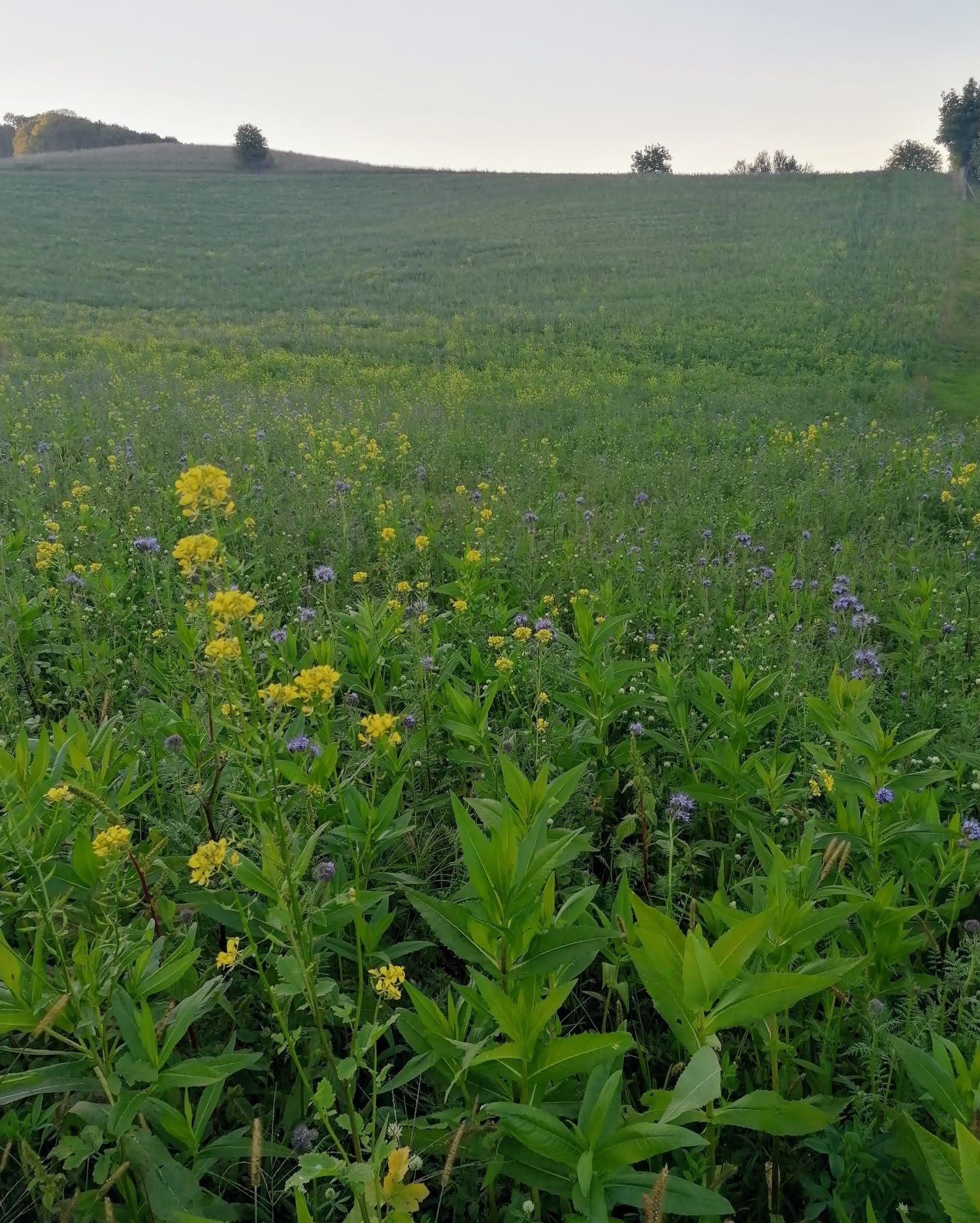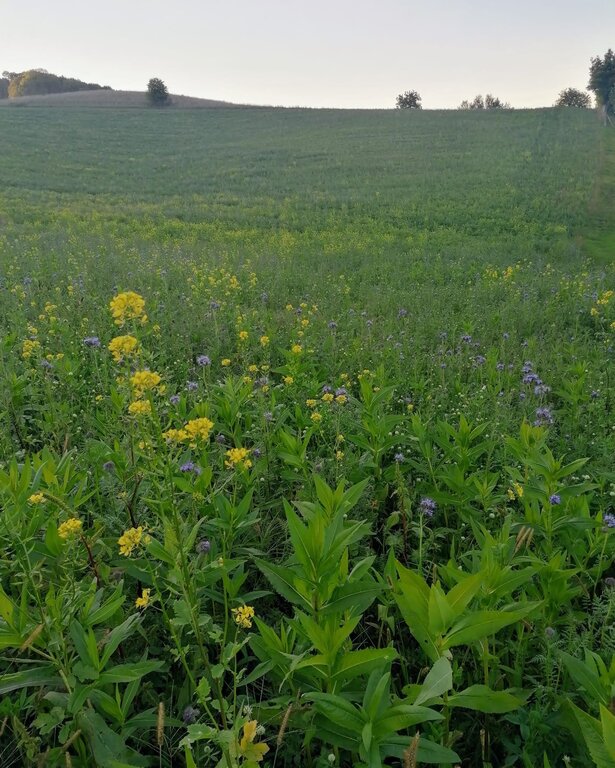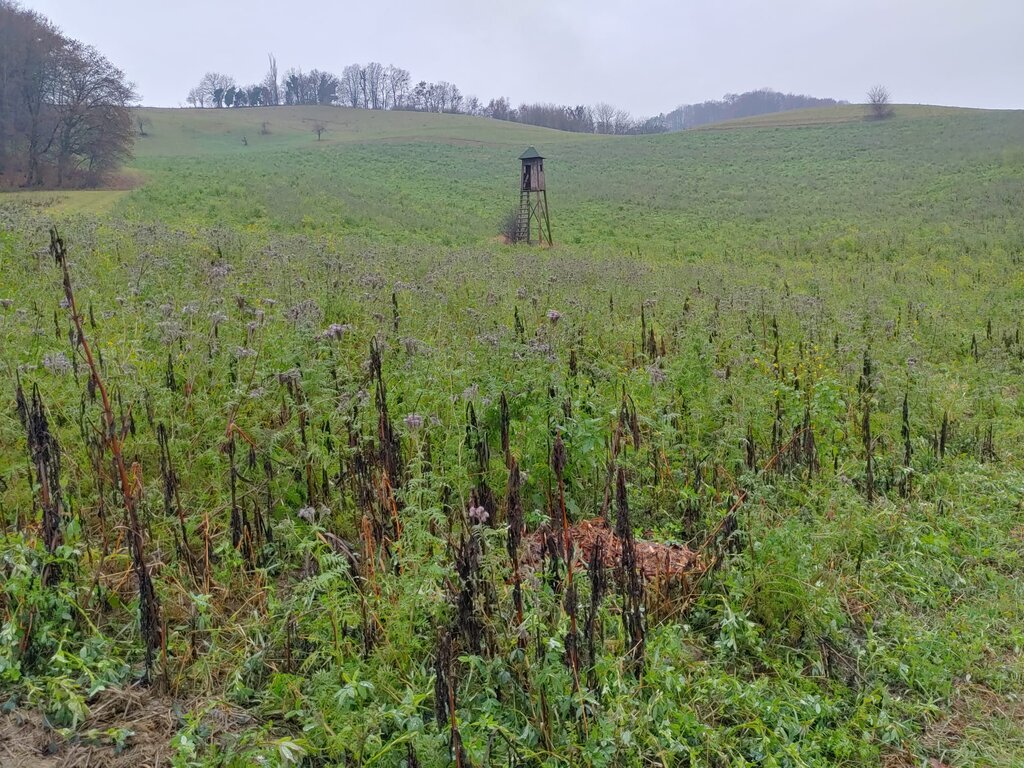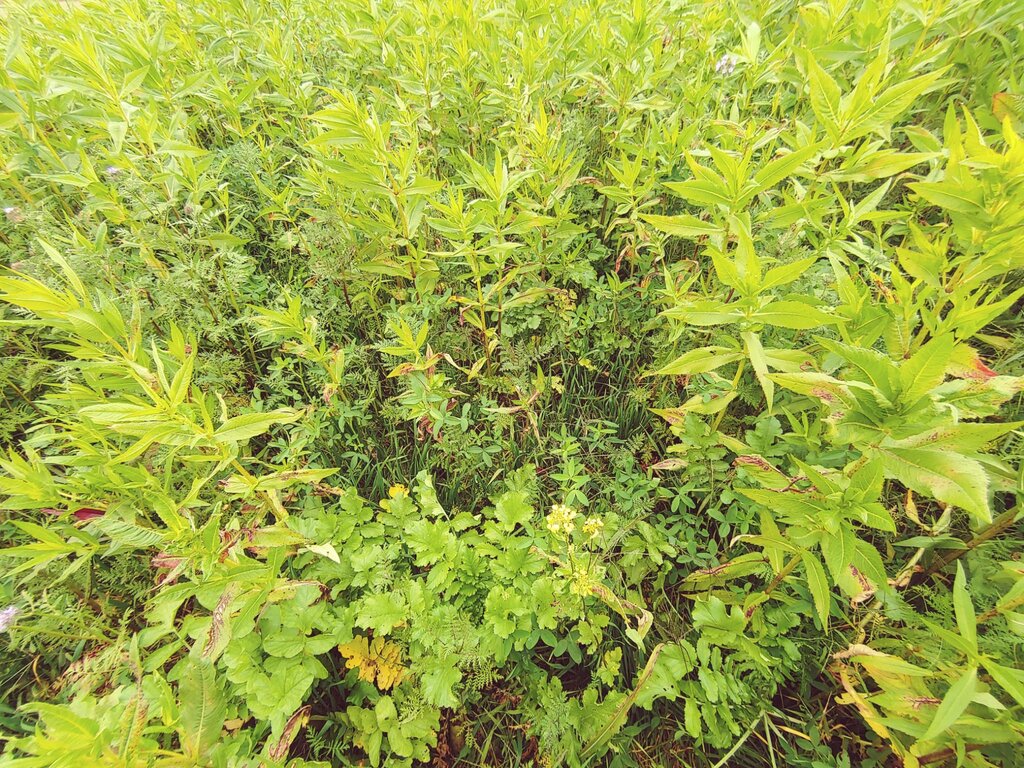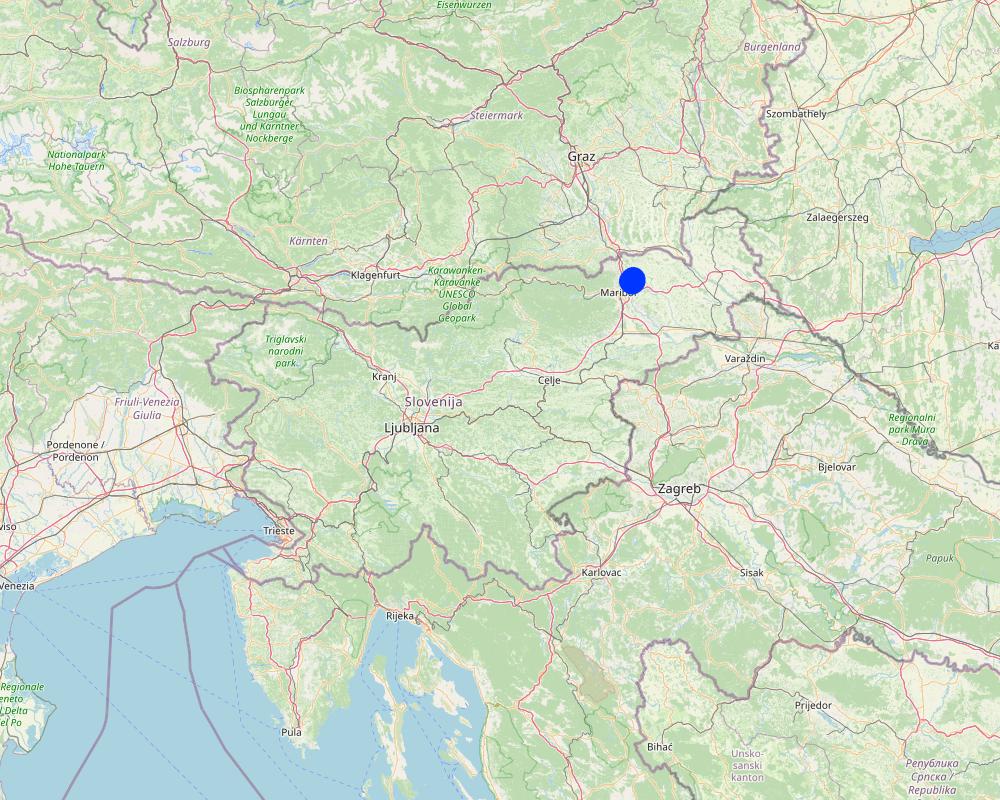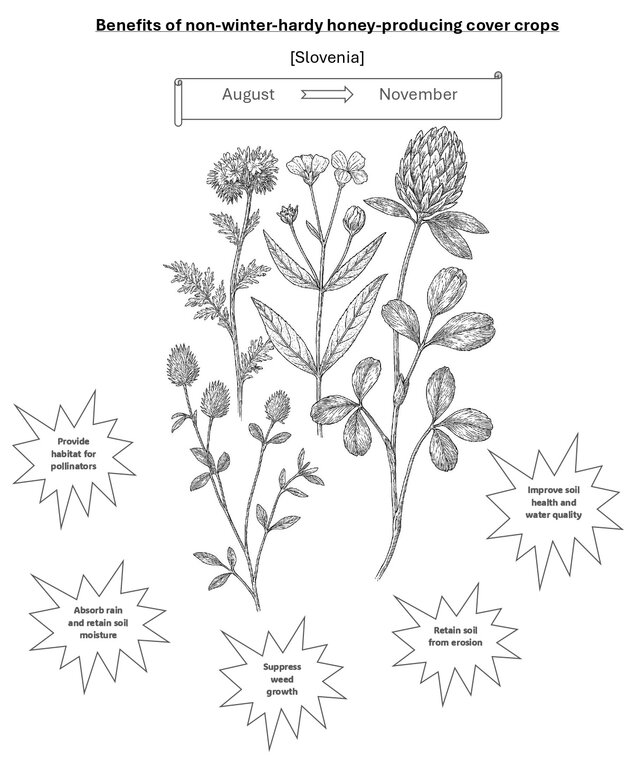Non-winter-hardy honey-producing cover crops [Slovenia]
- Creation:
- Update:
- Compiler: Gregor Kramberger
- Editor: Tamara Korošec
- Reviewers: William Critchley, Rima Mekdaschi Studer
Neprezimni medonosni posevki
technologies_7463 - Slovenia
View sections
Expand all Collapse all1. General information
1.2 Contact details of resource persons and institutions involved in the assessment and documentation of the Technology
SLM specialist:
land user:
Ropič Andrej
Farmer
Slovenia
co-compiler:
Horvat Tomotej
Chamber of Agriculture and Forestry of Slovenia (KGZS) – Institute of Agriculture and Forestry Maribor
Slovenia
Name of project which facilitated the documentation/ evaluation of the Technology (if relevant)
OPtimal strategies to retAIN and re-use water and nutrients in small agricultural catchments across different soil-climatic regions in Europe (OPTAIN)Name of the institution(s) which facilitated the documentation/ evaluation of the Technology (if relevant)
Chamber of Agriculture and Forestry of Slovenia – Institute of Agriculture and Forestry Maribor (KGZS) - Slovenia1.3 Conditions regarding the use of data documented through WOCAT
The compiler and key resource person(s) accept the conditions regarding the use of data documented through WOCAT:
Yes
1.4 Declaration on sustainability of the described Technology
Is the Technology described here problematic with regard to land degradation, so that it cannot be declared a sustainable land management technology?
No
2. Description of the SLM Technology
2.1 Short description of the Technology
Definition of the Technology:
Non-winter-hardy honey-producing cover crops enhance soil fertility, prevent erosion, reduce nutrient leaching, and support biodiversity. These fast-growing, flowering plants are integrated into crop rotation, offering ecological and long-term economic benefits - and are supported by EU agricultural subsidies.
2.2 Detailed description of the Technology
Description:
Cover cropping with non-winter-hardy honey-producing mixtures is expanding on arable land in Slovenia, especially in lowland areas near water protection zones, streams, and other water bodies. These plants are often integrated into crop rotations of both conventional and organic farming systems. Together with winter-hardy cover crops, these mixtures are an essential component of good sustainable land management. Supported by the EU's Common Agricultural Policy through SOPO (Schemes for Climate and Environment) and KOPOP (Agri-Environmental-Climate Payments), this technology promotes sustainable agriculture by improving soil structure and health and preventing nutrient leaching.
Cover crops - also referred to as catch crops or green manures - are fast-growing, plants from various families, mostly legumes, grasses and brassicas. After the main crop harvest, these plants are sown and cover the soil during summer, autumn, and winter. We distinguish between winter-hardy and non-winter-hardy cover crops.
One of the most popular non-winter-hardy mixtures used in Slovenia, includes Egyptian clover (Trifolium alexandrinum), red clover (Trifolium pratense), phacelia (Phacelia tanacetifolia), and niger (Guizotia abyssinica). These species are drought-tolerant, support pollinators, and naturally perish after the first frost, simplifying subsequent soil preparation.
Their main functions are to improve soil fertility, retain moisture, prevent erosion, and reduce nutrient leaching into waterways. The different characteristics of the species in the mixture combine multiple advantages:
- dissimilar root systems extract nutrients from different layers of the soil;
- the various plant species extract different root exudates, which serve as a nutrient source for soil microorganisms;
- compacted soils become loose and of better structure;
- these species combined lead to enriched organic matter and humus;
- flowering species provide forage for pollinators;
- an overall impact is a reduced need for fertilizers and pesticides which in turn enhances water quality and lowers environmental risks;
- the leguminous species in the mixture fix nitrogen from the air, and follow-up crops like maize require less fertilizer, reducing greenhouse gas emissions.
Honey-producing non-winter-hardy mixtures are typically included in multi-year crop rotation plans. Activities involve selecting appropriate plant species/varieties or mixtures or species/varieties based on soil, climate, rotation and function requirements.
Shallow cultivation or direct sowing on well-prepared seedbeds takes place after cereal harvest, generally in July and August, with a recommended seeding rate of 12 kg/ha. Farmers usually avoid additional fertilization, as soil nutrients suffice for the growth of cover crops. Minimal maintenance is needed during growth since these plants suppress weeds and reduce pest pressure. Termination involves natural frost die-off, mulching, rolling, or shallow tillage. Detailed record-keeping ensures compliance with subsidy programs and supports long-term benefits.
Farmers value such cover cropping for its multiple benefits. They very much appreciate the subsidies they get for their additional effort to sow cover crops. However, challenges include higher initial costs, dependency on appropriate weather, complex timing of operations, and potential competition with main crops. Despite these hurdles, many farmers see cover cropping as a critical component of sustainable farming practices.
2.3 Photos of the Technology
2.5 Country/ region/ locations where the Technology has been applied and which are covered by this assessment
Country:
Slovenia
Region/ State/ Province:
Jareninski dol, Pernica
Further specification of location:
Vosek
Specify the spread of the Technology:
- evenly spread over an area
If the Technology is evenly spread over an area, specify area covered (in km2):
137.0
Is/are the technology site(s) located in a permanently protected area?
No
Map
×2.6 Date of implementation
Indicate year of implementation:
2020
If precise year is not known, indicate approximate date:
- less than 10 years ago (recently)
2.7 Introduction of the Technology
Specify how the Technology was introduced:
- through land users' innovation
- during experiments/ research
Comments (type of project, etc.):
The farmer adopted cover cropping as part of his transition to low-tillage farming, supported by experimentation and guidance from the public advisory service. The measure, backed by CAP subsidies, was adopted after research and experimentation, ensuring its effective integration into his farming system.
3. Classification of the SLM Technology
3.1 Main purpose(s) of the Technology
- improve production
- reduce, prevent, restore land degradation
- conserve ecosystem
- protect a watershed/ downstream areas – in combination with other Technologies
- preserve/ improve biodiversity
3.2 Current land use type(s) where the Technology is applied
Land use mixed within the same land unit:
No
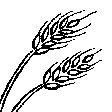
Cropland
- Annual cropping
Annual cropping - Specify crops:
- cereals - barley
- cereals - maize
- cereals - wheat (winter)
Number of growing seasons per year:
- 1
Is intercropping practiced?
Yes
If yes, specify which crops are intercropped:
The first year of the rotation comprises a mix of grasses and legumes
Is crop rotation practiced?
Yes
If yes, specify:
The farmer practices a 4- to 5-year crop rotation plan, primarily involving maize and winter cereals. After the harvest of winter cereals (e.g., wheat) in July, cover crops are sown in early August to protect the soil, enhance fertility, and support low-tillage practices.
3.3 Has land use changed due to the implementation of the Technology?
Has land use changed due to the implementation of the Technology?
- No (Continue with question 3.4)
3.4 Water supply
Water supply for the land on which the Technology is applied:
- rainfed
3.5 SLM group to which the Technology belongs
- improved ground/ vegetation cover
- minimal soil disturbance
- integrated soil fertility management
3.6 SLM measures comprising the Technology
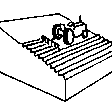
agronomic measures
- A1: Vegetation/ soil cover
- A2: Organic matter/ soil fertility
- A6: Residue management
A6: Specify residue management:
A 6.4: retained
3.7 Main types of land degradation addressed by the Technology
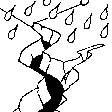
soil erosion by water
- Wt: loss of topsoil/ surface erosion
- Wg: gully erosion/ gullying
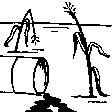
chemical soil deterioration
- Cn: fertility decline and reduced organic matter content (not caused by erosion)
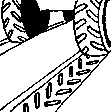
physical soil deterioration
- Pc: compaction
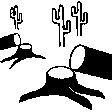
biological degradation
- Bc: reduction of vegetation cover
- Bq: quantity/ biomass decline
- Bl: loss of soil life
- Bp: increase of pests/ diseases, loss of predators
3.8 Prevention, reduction, or restoration of land degradation
Specify the goal of the Technology with regard to land degradation:
- prevent land degradation
- reduce land degradation
4. Technical specifications, implementation activities, inputs, and costs
4.1 Technical drawing of the Technology
Technical specifications (related to technical drawing):
Technical specifications for sowing non-winter-hardy honey-producing mixture
Sowing time: Sowing is recommended immediately after the harvest of winter cereals, in late July or early August.
Seeding rate: 12 kg/ha
Soil preparation: High-quality seedbed preparation is necessary due to the small seed size. Blind sowing is recommended to destroy or prevent the growth of weeds.
Sowing depth: Seeds are sown shallowly, typically at a depth of 1–2 cm, depending on soil conditions.
Row spacing: Cover crops are typically sown using a grain drill with a row spacing of 12.5 cm (approximately 5 inches) or broadcasted using a fertilizer spreader. Drilling ensures precise seed placement and consistent depth, promoting uniform germination. Broadcasting, on the other hand, involves spreading seeds evenly across the soil surface, often followed by light incorporation to enhance seed-to-soil contact. Both methods are widely used, with the choice depending on specific field conditions and equipment. Plant height: Plants in the mixture grow to a height of 50–100 cm, depending on the varieties used and growing conditions.
Winter hardiness: The plants in the mixture are non-winter-hardy; they perish with the first autumn frost, simplifying autumn or spring plowing.
Suitability for crop rotation: The mixture integrates well into crop rotation as species in it are not related to cash crops. It is sown after the harvest of winter cereals and other early/spring cash crops.
This mixture is particularly suitable for water protection areas as its intense growth prevents the leaching of excess nitrogen from the soil into groundwater, improves the water-holding capacity of the soil and effectively suppresses erosion and weeds. Additionally, its colorful flowers during the summer months enliven the landscape and provide a rich source of nectar for bees and other pollinators.
Author:
Gregor Kramberger
Date:
21/07/2025
4.2 General information regarding the calculation of inputs and costs
Specify how costs and inputs were calculated:
- per Technology area
Indicate size and area unit:
11.44 ha
If using a local area unit, indicate conversion factor to one hectare (e.g. 1 ha = 2.47 acres): 1 ha =:
ha = 10.000 m2
other/ national currency (specify):
EUR
If relevant, indicate exchange rate from USD to local currency (e.g. 1 USD = 79.9 Brazilian Real): 1 USD =:
0.85
Indicate average wage cost of hired labour per day:
114
4.3 Establishment activities
| Activity | Timing (season) | |
|---|---|---|
| 1. | Purchase of a disc harrow with cover crops seed drill | 1st year |
Comments:
The use of a disc harrow with a cover crop seed drill can support soil preparation and sowing, but it is not strictly necessary. Many farmers use other types of harrows and seeders, which may be more cost-effective or already available on the farm. In some cases, such equipment is shared or acquired through collective investment. While the typical depreciation period for this type of machinery is around 12 years, it is often used for 20 to 30 years, or as long as it remains functional and economically viable.
4.4 Costs and inputs needed for establishment
| Specify input | Unit | Quantity | Costs per Unit | Total costs per input | % of costs borne by land users | |
|---|---|---|---|---|---|---|
| Equipment | Disc harrow with cover crops seed drill | piece | 1.0 | 20000.0 | 20000.0 | 70.0 |
| Total costs for establishment of the Technology | 20000.0 | |||||
| Total costs for establishment of the Technology in USD | 23529.41 | |||||
If land user bore less than 100% of costs, indicate who covered the remaining costs:
Part of the agricultural machinery intended for the implementation of environmental measures can be funded through non-repayable grants from European and national funds under the CAP.
Comments:
The cost of such machinery is a key factor, as equipment like a disc harrow with a seed drill can be expensive. However, it should last for 20 years (or more). Furthermore, it is not strictly necessary, many farmers use simpler or existing machinery, and shared or collective investment is also common.
4.5 Maintenance/ recurrent activities
| Activity | Timing/ frequency | |
|---|---|---|
| 1. | Variable costs of honey-producing non-winter-hardy cover crops | Every year. |
Comments:
Variable costs represent the total production expenses for sowing the mixture, including seeds, machinery and labor costs and financing.
4.6 Costs and inputs needed for maintenance/ recurrent activities (per year)
| Specify input | Unit | Quantity | Costs per Unit | Total costs per input | % of costs borne by land users | |
|---|---|---|---|---|---|---|
| Labour | Work with machines | hour | 52.0 | 9.0 | 468.0 | 100.0 |
| Equipment | Seedbed preparation and sowing | hour | 23.0 | 35.2 | 809.6 | 100.0 |
| Equipment | Mulching | hour | 29.0 | 32.0 | 928.0 | 100.0 |
| Plant material | Seed | ha | 11.44 | 79.2 | 906.05 | 100.0 |
| Other | Financing cost | % | 0.03 | 3089.94 | 92.7 | 100.0 |
| Total costs for maintenance of the Technology | 3204.35 | |||||
| Total costs for maintenance of the Technology in USD | 3769.82 | |||||
Comments:
The farmer cultivates a total of 28.6 hectares of arable land. The area is theoretically divided into five equal parts, as it follows a 5-year crop rotation system. Additionally, a cover crop is sown after barley and wheat. Therefore, we have accounted for costs on 2/5 of the additional total area.
4.7 Most important factors affecting the costs
Describe the most determinate factors affecting the costs:
The total area is theoretically divided into five equal parts, following the 5-year crop rotation system. However, in practice, this division is not perfectly even. Other important cost factors include variations in input prices (such as seeds, fertilizers, and plant protection products), machinery costs, labor availability, and weather conditions that impact yields and operational efficiency.
5. Natural and human environment
5.1 Climate
Annual rainfall
- < 250 mm
- 251-500 mm
- 501-750 mm
- 751-1,000 mm
- 1,001-1,500 mm
- 1,501-2,000 mm
- 2,001-3,000 mm
- 3,001-4,000 mm
- > 4,000 mm
Specify average annual rainfall (if known), in mm:
1032.00
Specifications/ comments on rainfall:
Most precipitation falls in summer, the months with the highest average precipitation are August and September, the least precipitation falls in winter, in January and February at least, and in principle more precipitation falls in autumn than in spring.
Indicate the name of the reference meteorological station considered:
Jareninski Vrh (1991-2020)
Agro-climatic zone
- sub-humid
The average annual air temperature at Jareninski Vrh during the reference period 1991–2020 was 10.1 °C.
5.2 Topography
Slopes on average:
- flat (0-2%)
- gentle (3-5%)
- moderate (6-10%)
- rolling (11-15%)
- hilly (16-30%)
- steep (31-60%)
- very steep (>60%)
Landforms:
- plateau/plains
- ridges
- mountain slopes
- hill slopes
- footslopes
- valley floors
Altitudinal zone:
- 0-100 m a.s.l.
- 101-500 m a.s.l.
- 501-1,000 m a.s.l.
- 1,001-1,500 m a.s.l.
- 1,501-2,000 m a.s.l.
- 2,001-2,500 m a.s.l.
- 2,501-3,000 m a.s.l.
- 3,001-4,000 m a.s.l.
- > 4,000 m a.s.l.
Indicate if the Technology is specifically applied in:
- not relevant
5.3 Soils
Soil depth on average:
- very shallow (0-20 cm)
- shallow (21-50 cm)
- moderately deep (51-80 cm)
- deep (81-120 cm)
- very deep (> 120 cm)
Soil texture (topsoil):
- medium (loamy, silty)
Soil texture (> 20 cm below surface):
- medium (loamy, silty)
Topsoil organic matter:
- medium (1-3%)
5.4 Water availability and quality
Ground water table:
5-50 m
Availability of surface water:
good
Water quality (untreated):
for agricultural use only (irrigation)
Water quality refers to:
surface water
Is water salinity a problem?
No
Is flooding of the area occurring?
Yes
Regularity:
episodically
Comments and further specifications on water quality and quantity:
Hydromelioration was carried out in the area, a drainage system and water retention systems (e.g. ponds and basins) were arranged.
5.5 Biodiversity
Species diversity:
- medium
Habitat diversity:
- medium
5.6 Characteristics of land users applying the Technology
Sedentary or nomadic:
- Sedentary
Market orientation of production system:
- commercial/ market
Off-farm income:
- 10-50% of all income
Relative level of wealth:
- average
Individuals or groups:
- individual/ household
Level of mechanization:
- mechanized/ motorized
Gender:
- men
Age of land users:
- middle-aged
5.7 Average area of land used by land users applying the Technology
- < 0.5 ha
- 0.5-1 ha
- 1-2 ha
- 2-5 ha
- 5-15 ha
- 15-50 ha
- 50-100 ha
- 100-500 ha
- 500-1,000 ha
- 1,000-10,000 ha
- > 10,000 ha
Is this considered small-, medium- or large-scale (referring to local context)?
- medium-scale
Comments:
In 2023, the average agricultural holding in Slovenia manages 8.8 hectares of utilized agricultural land.
5.8 Land ownership, land use rights, and water use rights
Land ownership:
- individual, titled
Land use rights:
- leased
- individual
Water use rights:
- communal (organized)
Are land use rights based on a traditional legal system?
No
Specify:
Based on national legal system.
5.9 Access to services and infrastructure
health:
- poor
- moderate
- good
education:
- poor
- moderate
- good
technical assistance:
- poor
- moderate
- good
employment (e.g. off-farm):
- poor
- moderate
- good
markets:
- poor
- moderate
- good
energy:
- poor
- moderate
- good
roads and transport:
- poor
- moderate
- good
drinking water and sanitation:
- poor
- moderate
- good
financial services:
- poor
- moderate
- good
6. Impacts and concluding statements
6.1 On-site impacts the Technology has shown
Socio-economic impacts
Production
crop production
Comments/ specify:
Cover crops improve soil fertility, moisture retention, and nutrient availability, leading to slight yield improvements in the following crop. The impact depends on crop rotation, soil conditions, and cover crop management.
fodder production
Comments/ specify:
Cover crops used in this system are not intended for grazing or fodder production; their role is primarily soil conservation and fertility enhancement. Usually, they are incorporated into the soil.
land management
Comments/ specify:
Cover crops enhance soil conservation, reduce the need for intensive tillage, and improve crop rotation efficiency.
Income and costs
expenses on agricultural inputs
Comments/ specify:
Cover crops reduce the need for fertilizers and herbicides, but additional costs for seeds and labor partially offset these savings.
farm income
Comments/ specify:
Cover crops require an initial investment, but long-term benefits such as reduced input costs and improved soil fertility may positively impact farm income over time.
workload
Comments/ specify:
Additional labor required for sowing and managing cover crops.
Ecological impacts
Water cycle/ runoff
evaporation
Comments/ specify:
Cover crops reduce direct soil exposure, lowering evaporation and improving water retention.
Soil
soil moisture
Comments/ specify:
Cover crops enhance soil moisture by reducing evaporation and improving water infiltration.
soil cover
Comments/ specify:
Cover crops provide continuous ground cover, protecting the soil from erosion, nutrient loss, and extreme weather conditions.
soil loss
Comments/ specify:
Cover crops significantly reduce soil loss by stabilizing the soil, preventing erosion, and improving infiltration.
Biodiversity: vegetation, animals
Vegetation cover
Comments/ specify:
Cover crops provide continuous plant cover, reducing bare soil exposure and enhancing biodiversity.
biomass/ above ground C
Comments/ specify:
Cover crops contribute significantly to above-ground biomass accumulation, increasing organic carbon input into the soil.
plant diversity
Comments/ specify:
Cover crops introduce multiple species into the cropping system, enhancing plant diversity and ecosystem resilience.
beneficial species
Comments/ specify:
Cover crops support pollinators, natural pest predators, and soil organisms, enhancing ecosystem balance.
habitat diversity
Comments/ specify:
Cover crops create diverse habitats for pollinators, beneficial insects, and soil organisms, improving ecosystem resilience.
pest/ disease control
Comments/ specify:
Cover crops help break pest and disease cycles, support beneficial insects, and improve soil health, reducing outbreaks.
Climate and disaster risk reduction
drought impacts
Comments/ specify:
Cover crops enhance water retention, reduce evaporation, and improve soil structure, making fields more resilient to drought.
Specify assessment of on-site impacts (measurements):
The data have not been obtained through specific measurements but rather through a questionnaire with the farmer and insights from other farms and agricultural advisors.
6.2 Off-site impacts the Technology has shown
buffering/ filtering capacity
Comments/ specify:
Cover crops act as a natural buffer, reducing runoff, filtering pollutants, and preventing nutrient loss.
Specify assessment of off-site impacts (measurements):
The data have not been obtained through specific measurements but rather through a questionnaire with the farmer and insights from other farms and agricultural advisors.
6.3 Exposure and sensitivity of the Technology to gradual climate change and climate-related extremes/ disasters (as perceived by land users)
Gradual climate change
Gradual climate change
| Season | increase or decrease | How does the Technology cope with it? | |
|---|---|---|---|
| annual temperature | increase | well | |
| seasonal temperature | summer | increase | well |
| seasonal temperature | spring | increase | moderately |
| seasonal temperature | autumn | increase | well |
| seasonal temperature | winter | increase | moderately |
| seasonal rainfall | summer | increase | well |
| seasonal rainfall | spring | increase | moderately |
| seasonal rainfall | autumn | decrease | well |
Climate-related extremes (disasters)
Meteorological disasters
| How does the Technology cope with it? | |
|---|---|
| local rainstorm | well |
Climatological disasters
| How does the Technology cope with it? | |
|---|---|
| heatwave | well |
| drought | well |
6.4 Cost-benefit analysis
How do the benefits compare with the establishment costs (from land users’ perspective)?
Short-term returns:
slightly negative
Long-term returns:
slightly positive
How do the benefits compare with the maintenance/ recurrent costs (from land users' perspective)?
Short-term returns:
neutral/ balanced
Long-term returns:
positive
Comments:
In the short term, establishment costs are high machinery investment, with no direct financial return. However, in the long term, benefits such as improved soil fertility, reduced input costs, and better yields in crop rotation help offset initial expenses. In the short term, maintenance costs, such as seed, labor for sowing and termination, are balanced by reduced expenses on herbicides and fertilizers. Over the long term, cover cropping leads to lower input costs, improved soil health, and better yields in crop rotation
6.5 Adoption of the Technology
- 11-50%
Of all those who have adopted the Technology, how many did so spontaneously, i.e. without receiving any material incentives/ payments?
- 0-10%
6.6 Adaptation
Has the Technology been modified recently to adapt to changing conditions?
Yes
If yes, indicate to which changing conditions it was adapted:
- changing markets
Specify adaptation of the Technology (design, material/ species, etc.):
The composition of the cover crop mix was adjusted to better fit the crop rotation, improving soil fertility and weed suppression.
6.7 Strengths/ advantages/ opportunities of the Technology
| Strengths/ advantages/ opportunities in the land user’s view |
|---|
| Improvement of soil fertility (improved soil structure, increased humus - organic matter content) |
| Soil erosion control (e.g., Pernica lake) |
| Weed control – suppression of weeds |
| Moisture retention in the soil (protection of soil against direct sun rays) |
| Long-term pest control |
| Easier soil cultivation - suitable for minimum tillage |
| Beneficial for bees and wild pollinators |
| Improved aesthetic value of the landscape |
| Strengths/ advantages/ opportunities in the compiler’s or other key resource person’s view |
|---|
| Non-winter-hardy cover crops improve soil structure, increase organic matter content, increase the number and variety of soil (micro)organisms and enhance nutrient cycling, leading to more fertile and resilient soils. They also help in nutrient retention. |
| The root systems of cover crops help anchor the soil, reducing erosion caused by wind and water. |
| Continuous cover with cover crops can suppress weeds, reducing the need for herbicides. |
| Certain cover crops can break pest and disease cycles, contributing to healthier crops. |
| Honey producing non-winter-hardy cover crops support pollinators. |
6.8 Weaknesses/ disadvantages/ risks of the Technology and ways of overcoming them
| Weaknesses/ disadvantages/ risks in the land user’s view | How can they be overcome? |
|---|---|
| Time- and labor-intensive, requiring significant coordination in terms of timing, weather, and other conditions to meet the deadlines set within the framework of the Common Agricultural Policy – CAP, if the farmer wants to get subsidies for this planting cover crops. | Farmers have greater influence in policy making. Bottom-up approach. |
| Additional seed cost. | The farmer enrolls in CAP measures to receive a subsidy for this measure. |
| Initial costs when purchasing equipment, additional investments, and changes in work technology. | Equipment rental, applying for funding grants for equipment, and modifying already existing machinery. |
| Complexity of management, more demanding planning, and necessary knowledge. | Education |
| Farm conditions vary, and the effectiveness of cover crops depends on soil type, climate, and local conditions, which can affect growth and overall benefits. | Selecting suitable cover crop mixtures adapted to local soil and climate conditions. Flexible management practices, regular monitoring, technical support, education. |
| Inappropriate use | Education |
| Weaknesses/ disadvantages/ risks in the compiler’s or other key resource person’s view | How can they be overcome? |
|---|---|
| Establishing and terminating cover crops require additional time and labor, which can be a limiting factor for some farmers. | Good planning, collaboration with other farmers, subsidies, and awareness of the long-term benefits of this method encourages the farmer to be more willing to invest effort. |
| Additional costs for seed purchase and extra labor. | The farmer enrolls in CAP measures to receive a subsidy for this measure. |
| Potential challenges in soil preparation. | Appropriate equipment, planning, selection of the right plant varieties. |
| Complexity of crop management and planning. | Education, planning, record keeping. |
7. References and links
7.1 Methods/ sources of information
- interviews with land users
1 (Andrej Ropič, farmer)
- interviews with SLM specialists/ experts
2 (Chamber of Agriculture and Forestry of Slovenia (KGZS) – Institute of Agriculture and Forestry Maribor; Tamara Korošec and Timotej Horvat)
- compilation from reports and other existing documentation
CAP and Slovenian Strategic Plan 2023-2027.
When were the data compiled (in the field)?
17/01/2023
Comments:
Visit to the farm and farmer interview.
7.2 References to available publications
Title, author, year, ISBN:
Quintarelli, V., Radicetti, E., Allevato, E., Stazi, S. R., Haider, G., Abideen, Z., Bibi, S., Jamal, A., & Mancinelli, R. (2022). Cover Crops for Sustainable Cropping Systems: A Review. Agriculture, 12(12), 2076.
Available from where? Costs?
https://doi.org/10.3390/agriculture12122076
7.3 Links to relevant online information
Title/ description:
Ministry of Agriculture, Forestry and Food. (2024). Unified Application 2024: Guidelines for the implementation of interventions under the Strategic Plan of the Common Agricultural Policy 2023–2027. Ljubljana, Slovenia.
URL:
https://www.kgzs.si/uploads/eiv24/NAVODILA%201/00_VELIKA_NAVODILA_2024_-_CELOTA_-_28_5_24.pdf
Title/ description:
SARE: Cover Crops for Sustainable Crop Rotations
URL:
https://www.sare.org/resources/cover-crops/
Title/ description:
Recommendations for sowing catch crops and winter cover crops for the sustainable use of arable land (Priporočila za setev naknadnih in prezimnih posevkov, za trajnostno rabo njiv)
URL:
https://www.kmetijskizavod-nm.si/uploads/kgz_nm/travni%C5%A1tvo/Priporo%C4%8Dila_za_setev_naknadnih_in_prezimnih_posevkov.pdf
Links and modules
Expand all Collapse allLinks
No links
Modules
No modules


